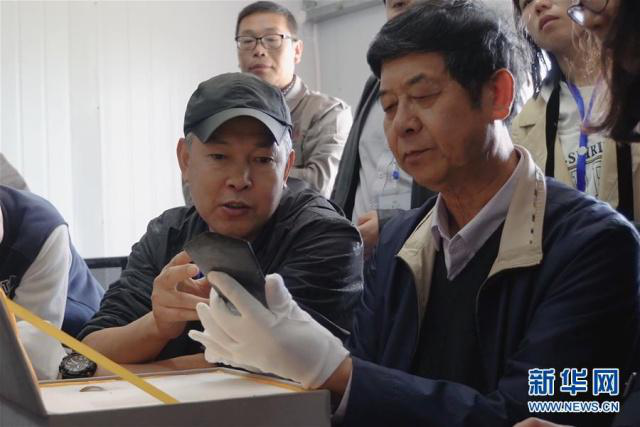Prehistoric Jade Making Center Excavated in Yangshao Tomb in Nanyang

Jade articles, stones, potteries and a large number of pig mandibles were unearthed from tomb No. 18. [Photo/Xinhua].

The highest-ranking clan tomb of the Qujialing Culture period found in southwestern Henan province. [Photo/Xinhua].

Archaeologists are studying the jade axe. [Photo/Xinhua].
Archaeologists unearthed a jade making site from the Yangshao Culture period and a high-grade tomb of a suspected chieftain of the Qujialing Culture period at the Huangshan site in Nanyang, Henan province, attracting some 20 archaeologists for further research on April 29.
"A jade axe, a symbol of power, and other objects such as jade articles, stones, potteries and a large number of pig mandibles were unearthed from tomb No. 18. A wooden single coffin was found as well. Those things indicate that the dead had power, force and wealth," said Ma Juncai, the leader of the archaeological team and researcher of Henan Academy of Cultural Relics and Archaeology.
"This is the highest-ranking clan tomb of the Qujialing Culture period found in southwestern Henan province and even in the middle reaches of the Hanshui river," said Ma. Connected with this high-grade tomb, two late Yangshao culture sites with an area of more than 120 square meters were also found by archaeologists. The unearthed cultural relics such as jade, pottery and bone were jade processing workshops, they said.
The tomb's large size, complex structure and well-preserved objects are rare in China, and fill in some gaps regarding Neolithic jade workshops in central China. Jade materials, billets, leftovers, semi-finished and finished jades, as well as jade-making tools of different sizes such as stone drills, stone files, and pumice were also excavated. The unearthed objects basically depict the entire process of making jade objects 5,000 years ago.
"The features of the Huangshan site is that it is a professional jade manufacturing spot, which provides important proof for studies on the social structure and economic activities at that time," said Zhao Hui, a professor at Peking University.
